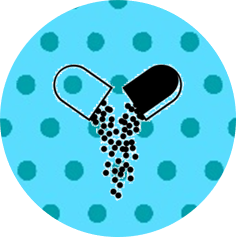
Nanoparticles demonstrate a terrific potential as drug delivery systems and theranostic agents due to their many properties: NPs are characterized by a nanometric size, which implies an intrinsic great surface area to volume ratio, providing a wide surface for the therapeutic agents to be adsorbed.
Moreover, their size allows an easy circulation in the blood stream and cellular internalization. NPs bring therapies, especially in oncology, a step forward, as nanocarriers give the possibility of a controlled drug release. Every drug has in fact a therapeutical window, in which the concentration of the drug in the organism is effective. Below the therapeutical window the drug is ineffective, due to its low concentration, above the upper limit the concentration of the drug is harmful or toxic for the organism. For this reason, an ideal administration should produce a constant concentration of the therapeutical agent in the fixed range. Conventional administration methods (oral, injection, inhalation, etc.) generate peaks and oscillations in the concentration of the drugs over time, which can easily drive the concentration out of the therapeutic window. The encapsulation of therapeutical agents in NPs, offers the possibility to a progressive and controlled release of the cargo, allowing a prolonged therapeutical effect.
We work on different TNHs to propose various drug delivery systems and scaffolds against cancer, having biocompatible, targeting or biodegradable properties [1-4].

Related Publications
